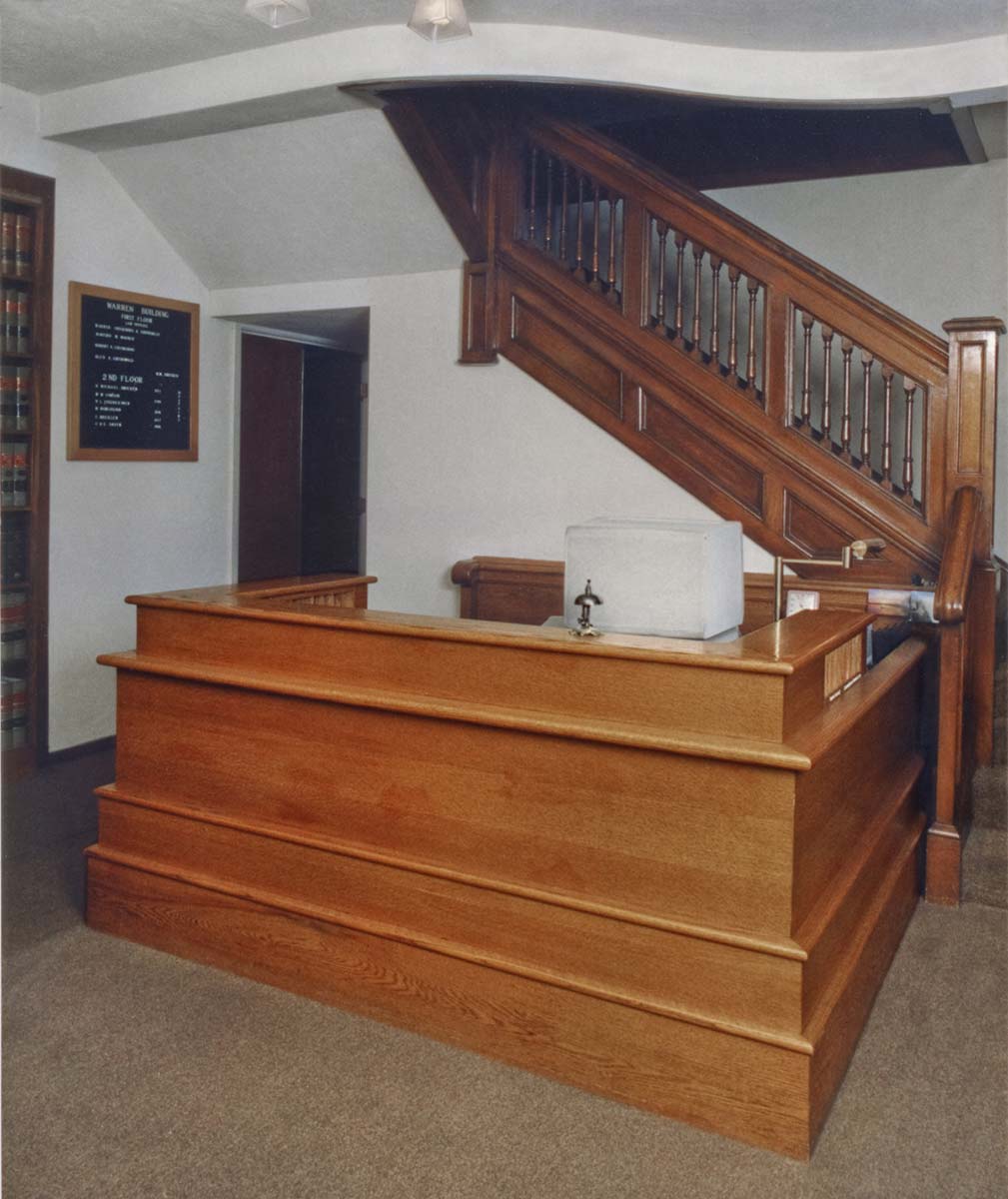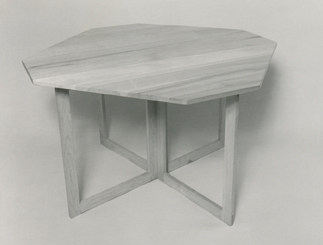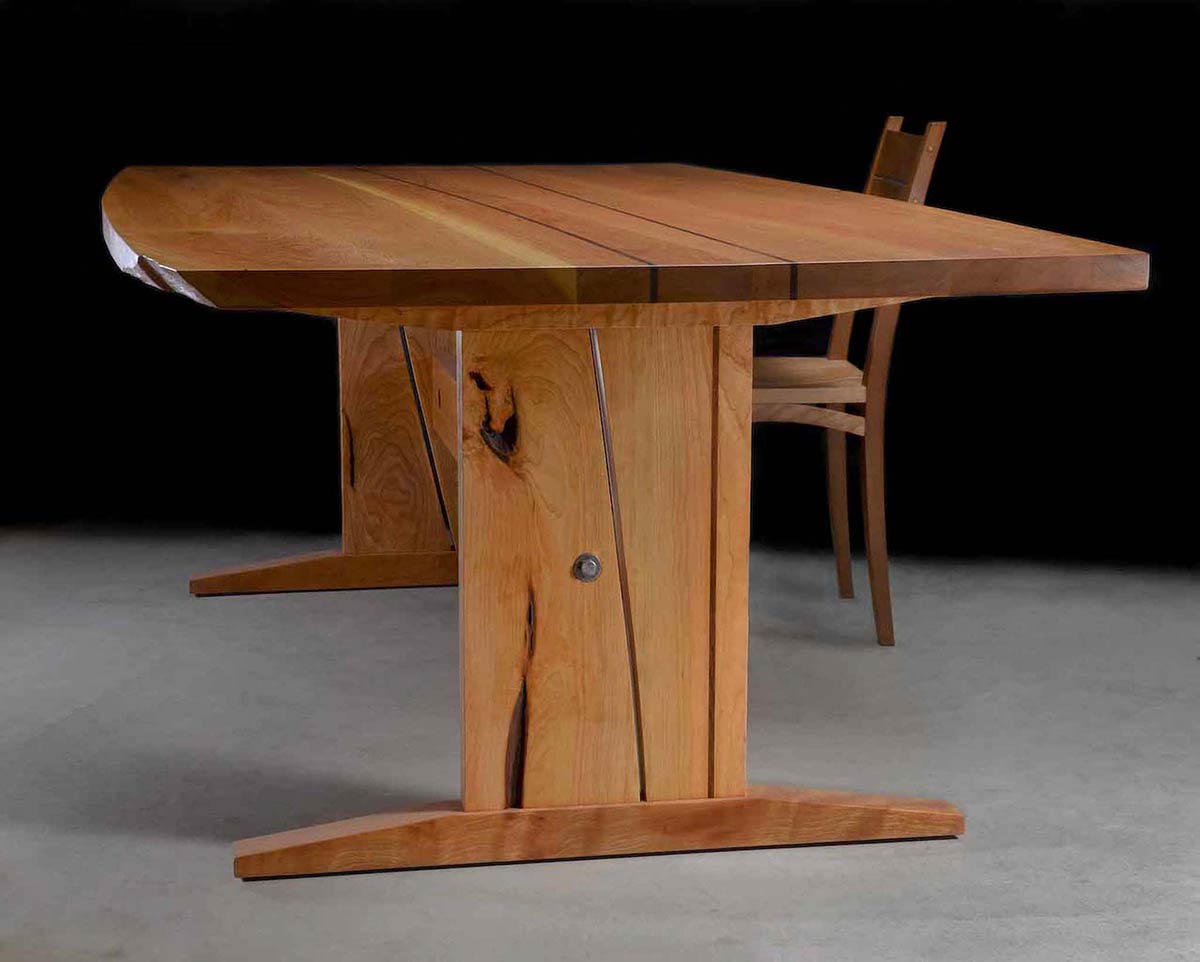I usually tell people that I started woodworking in 1980, when I first rented commercial space in Oakland to work in. The romance of the crafts was in the air in those days, and a lot of people took the plunge, but I stayed in longer than most; I designed and made custom furniture and cabinets full-time for twelve years, before finally deciding I needed a day job. I then went to engineering school and became a civil engineer, which became my principal occupation after that.
But I didn’t give up woodworking. I kept a workshop in a thousand-square-foot outbuilding we had acquired on moving to Napa in 1987, where I continued to make a few pieces a year, and after 2009 I was able to return to woodworking full-time. Since then, I have felt like Rip Van Winkle in the story by Washington Irving, who woke up after twenty years to a village that had changed around him.

The mahogany dining table in the next image is another piece from the eighties. As in the reception desk, molding details were carefully selected and executed. The table has a curved apron and some definite decorative touches, but the design is still restrained.




For good measure, the cherry top makes intentional use of a lot of the lighter sapwood, something I would never have done in the old days. I learned early on to select heartwood for appearance, somewhat in the same way that I learned to cut out knots, checks and waney edges – what used to be called defects in the material. These habits were enforced by the customer, who might in theory agree that a knot was beautiful but generally did not want it in a piece of expensive furniture. Nowadays people are much more open to the natural variability in the material.








Beautiful work and commentary, Bob! Love reading the history of your craft and seeing the amazing results. Thanks for this.
Boy, I haven’t been part of a group show in quite a while. It’s nice to see your growth over time.
All of this is so beautiful and interesting. I feel intrigued by your work. Thank you!